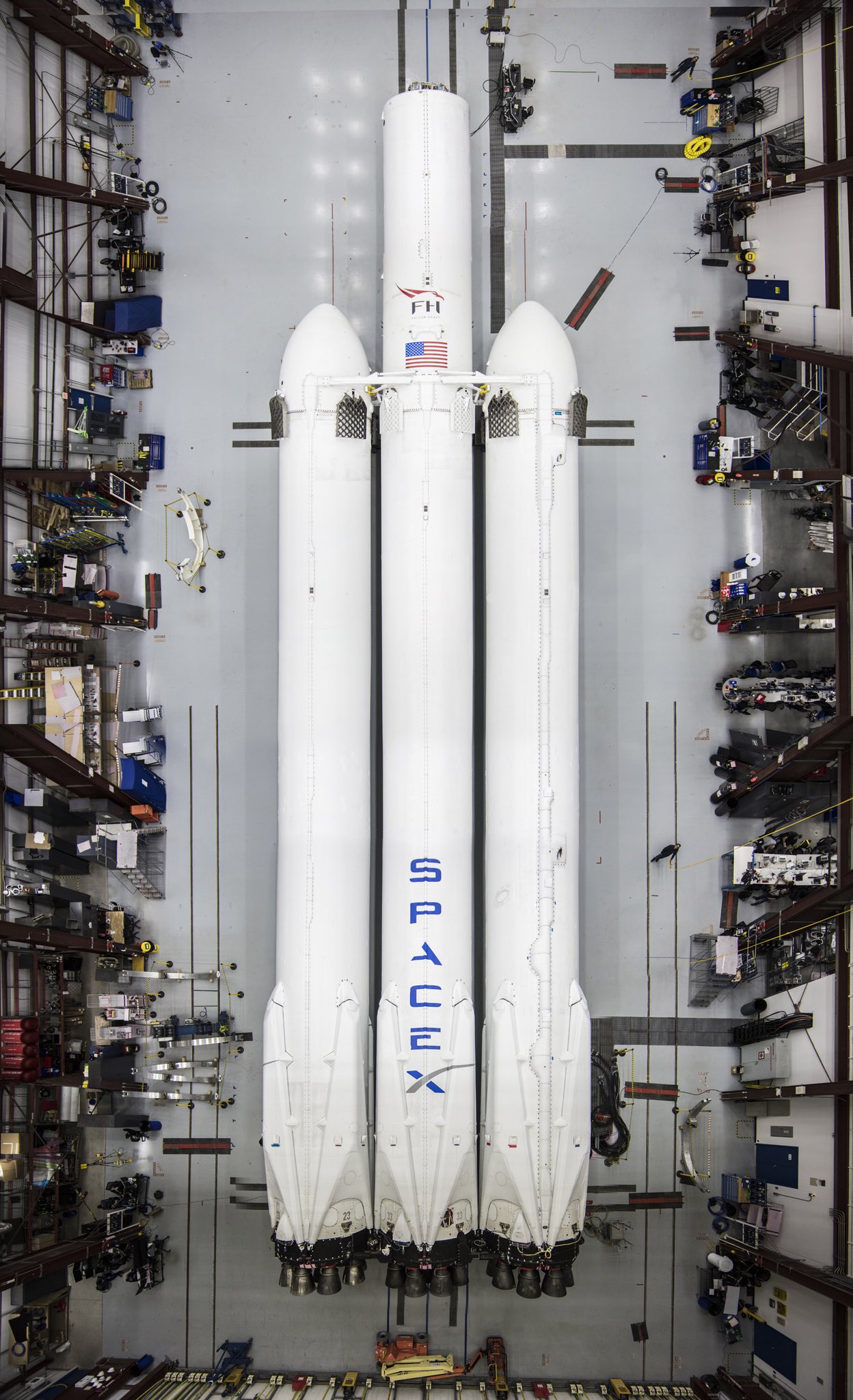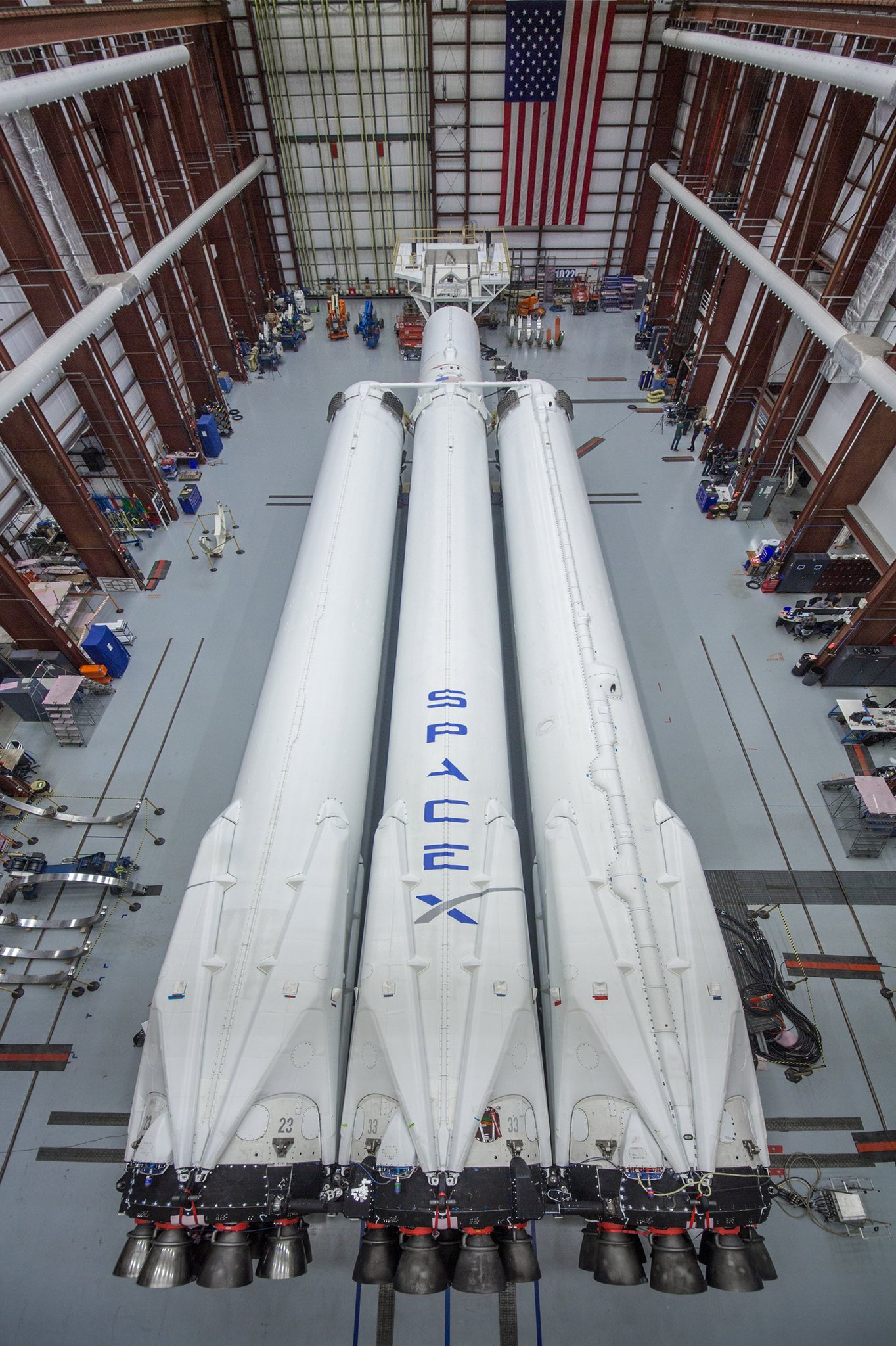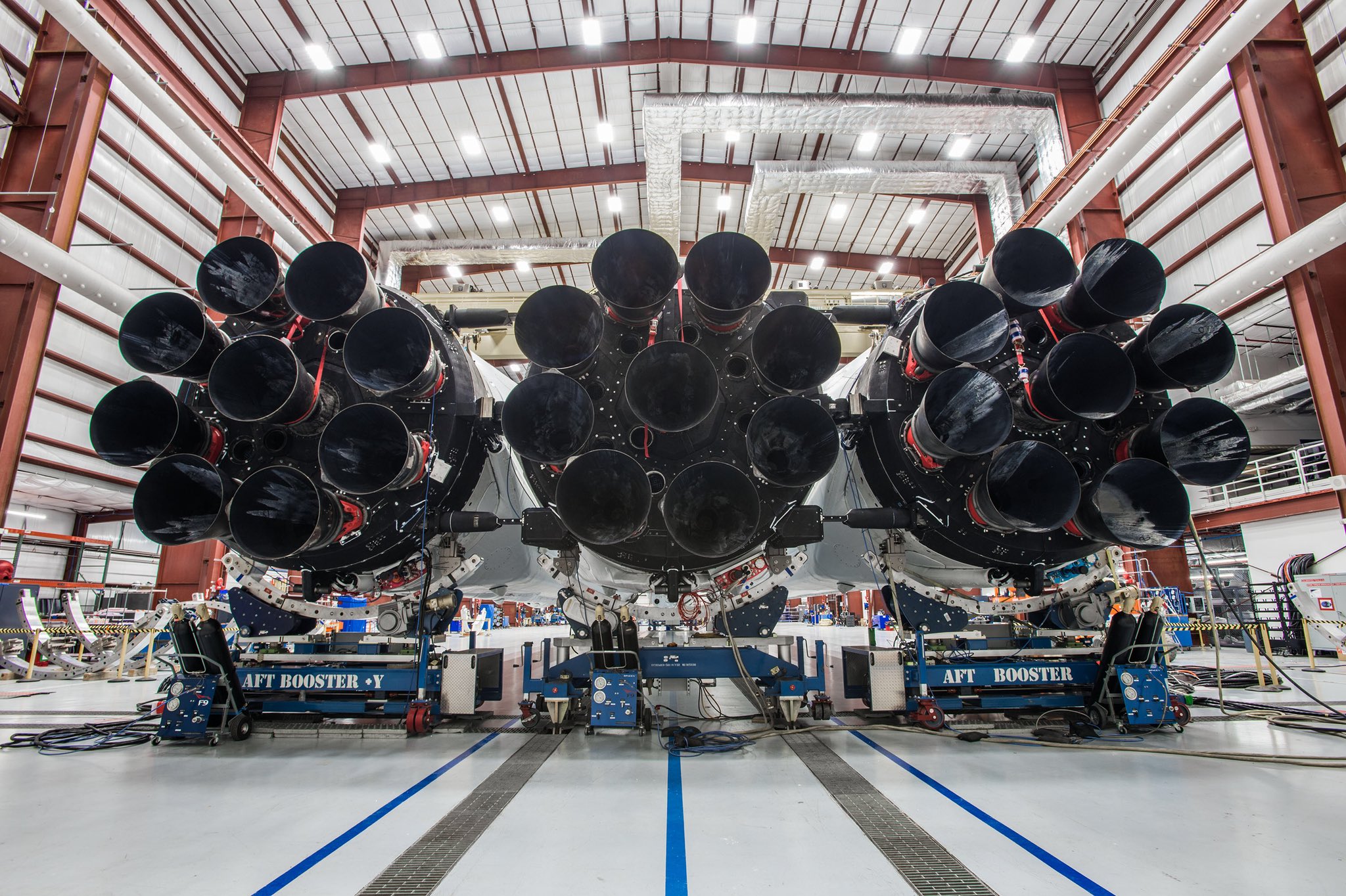You know that’s Sousa, right?
I do. But the song wasn’t chosen here because it was a Sousa march; it was chosen because it was the theme to Monty Python’s Flying Circus (of which Musk is a fan). Intent matters :).
It’s on!
Wow.
Well, that was pretty cool but not quite at the level of the first announcement. Speculation about the smaller rocket were true–it’s a tad smaller than the first one, though still bigger than a Saturn V, and more payload even with full reusability.
The Raptor engine is still coming along nicely, with 1000 seconds of burn time. It’s not quite at full power levels yet–200 bar rather than the 250-300 they hope to hit, but that’s still pretty great.
They want to replace their entire fleet–Falcon 9, Falcon Heavy, and Dragon–with this system. If they can pull it off, it makes sense. They have a lot of work ahead but if they can optimize every part of the launch process, there’s no reason it should cost more than a few million dollars to launch the thing. They plan on building up a store of rockets, then transitioning the whole factory to BFR production.
They want to land something on Mars by 2022. That sounds absurdly ambitious but I’m still pretty impressed by their progress so far.
The last bit was cool but seems pretty damn impractical to me: 30 minute flights to anywhere on Earth. I have a hard time believing you could ever close the case on that one; people just don’t value their time that much. Concorde more or less proved that.
Musk did add he expects fares to be comparable to a normal airline seat.
https://www.instagram.com/p/BZnVfWxgdLe/
I don’t think he would have suggested the idea unless he thought he could get the price down to an attractive level, which appears to be his continuing mantra.
They would have to get costs to a small multiple of the propellant costs. Methane and LOX are cheap; they should be <$1M per flight. If they can fit 500 passengers on a flight, that’s $2k/seat for propellant. So maybe $5k/seat is barely achievable, which is more than the cheap seats but not totally crazy.
I haven’t yet done the back-of-the-envelope math on how much propellant the new rocket needs so maybe it turns out to be less. Also possible that a suborbital flight needs less propellant. There’s no reason for them to use a full load on every mission (including to orbit).
The new rocket weighs 4400 tons, so let’s say 4000 of that is propellant. Both methane and LOX appear to cost around $160/ton. So that’s $640k for a full load, or only $1.3k/seat for 500 passengers. So the fuel at least is not the long pole here. Maintenance and such may be trickier…
Very interesting. Musk didn’t really go into the details of how BFR development would be paid for in the short/medium term, but there were a lot of implied possibilities.
First of all, with that payload bay the BFR could more than replace NASA’s obscenely expensive Space Launch System (SLS). IIRC the SLS is projected to cost something like $2 billion per launch, and only launch once every year or two. Conceivably, NASA (and Congress) might fund BFR development through similar mechanisms used to develop the Dragon. That is, NASA starts by kicking in tens of millions in to assist with early development, and if there’s good progress, hundreds of millions for later development. Then, NASA would pay a few hundred million for launches with the same sort of fixed-price service contract they use to buy Falcon 9 launches now. To the bureaucrat, spending 5%-10% of SLS program costs could be very sensible risk mitigation and cost reduction.
Critically, as an SLS replacement the BFR would only need the booster and the cargo upper stage – development of rapid-turnaround tanker and manned stages could be done using revenue from cargo launches.
The cargo variant could also be used to launch commercial satellites, but I’m not sure how much demand there will be for such a huge payload capacity. Presumably the BFR upper stage could do direct orbital insertion of large commercial and government satellites in geosynchronous orbit (and other high orbits), which would allow SpaceX to charge a premium over launches to geosynchronous transfer orbit. But that might be, optimistically, $400 million per launch for a dozen launches per year. Huge constellations of medium/small satellites could be put up in a handful of launches. Hell, with that much excess capacity, the cargo BFR stage could conceivably do some major orbital plane change maneuvers (or deploy several dispensers, each with a 3rd stage capable of the necessary plane change), and deploy an entire constellation of satellites in a single launch. But again, that’s perhaps a handful of launches per year.
Future demand might materialize, as companies figure out reasons to launch constellations of big cheap satellites, but those will take a decade or two to develop.
I guess this all comes down to costs. I have a hard time believing SpaceX can fund basic BFR development solely with the profits from Falcon 9 launches, nor development of a Mars program with profits of cargo BFR launches. But it might just be possible if they can get a small piece of what NASA is using to fund more expensive, less capable systems like Orion and the SLS…
How many Gs would a passenger pull during this thirty minute trip?
Another thought: the man-rated ICBM concept seems like something straight out of popular mechanics for ordinary passenger travel, and I’m skeptical that the math will work out once you include the cost of operating terminals, ferries, etc.
However, as a military transport, at military contractor prices, it might very well be profitable. Think of the value of being able to deploy an infantry battalion anywhere in the world on 2-3 hours notice… Compare that to the cost of buying and operating big transports like the C-5: $260 million per plane, $80k per flight hour * 18-ish hours to fly across the globe. I could imagine the military being willing to spend a billion per BFR, and hundreds of millions per year in operational costs.
Plus there’s a hell of a lot less red tape and NIMBY opposition when operating flights between airbases, instead of right in the harbor of the world’s most populated cities.
I’m skeptical that such a system is anywhere near being safe enough for passenger travel. Rockets still fail with a frequency that I’m not comfortable with.
Another beautiful launch today. I don’t know that I’ll every really tire of seeing the boosters land back at the launch site against a beautiful blue sky.
This time, both the Dragon capsule and the booster stage were pre-flown. This is the first time NASA has used a pre-flown booster, making them SpaceX’s third reuse customer after SES and Bulgariasat. Iridium (a current customer) has also said they’ll be happy to use a pre-flown booster.
Some comments by NASA:
This fits in with what I’ve said earlier–that reuse actually cuts some risks due to the fact that the booster had a previous successful flight. NASA still sees other risks go up, and so the net sum is roughly equal in their analysis. Perhaps, in time, they’ll see the “retired” risks dominate the new ones and so pre-flown boosters will actually be better overall.
So, I’ve heard talk about returning to the Moon, but why?
Don’t we know pretty much all there is to know at this point?
It’s a lifeless rock with no atmosphere. Why would anyone want to send humans there again? What purpose would it serve?
One of the joys of living in this part of Florida.
What is it that you think we know all there is to know about?
The Vandenburg launch site has equally beautiful scenery and skies. The only trouble is that unlike Florida, California is not particularly flat, and in in this particular case there are hills between the public viewing areas and the launch site. Also, their landing pad is not yet finished and so the only west-coast landings are on barges.
As Magiver implied, there is still a great deal to learn about the Moon. For instance, lunar lava tubes were discovered less than a decade ago and are completely unexplored from ground level. From orbit, we can only say that they exist. We still know very little about lunar geology. Everything we learn about the Moon is a part of Earth’s own history as well, since it was formed from a giant collision with Earth.
“Why send humans” is a valid question. Robotic exploration is vastly cheaper. It’s reasonable to argue that we should continue robotic exploration for a while longer.
However, if you feel that there is any basis for humans eventually becoming a spacefaring species, eventually we will have to figure out how to live in closed systems that aren’t Earth. LEO, the Moon, and Mars are all valid medium-term destinations. Growing food, harvesting resources, ameliorating the effects of micro/hypo gravity, etc. are all problems that need to be figured out. The Moon has water and minerals, and I’d certainly like to see effort put toward using those to establish a permanent base.
Incidentally, this was SpaceX’s 17th flight of the year, and their 45th total (of Falcon 9). That’s over a third of the total, despite the vehicle flying since 2010. They’ve really improved their launch cadence, and with three active pads at the moment, they’ll be able to increase their launch rate even further next year. Although not at the same level as the US and USSR at the peak of the cold war, 17 in a year is a very respectable rate and beats the annual records for their competitors ULA and Arianespace.
Some pictures of the upcoming Falcon Heavy:



It’s getting close! No rocket with that many engines has made it to orbit yet (the Russian N1 had 30 engines but all four test flights failed).
You can see that the side boosters are using the new, larger, all-titanium grid fins. Apparently this is because the nose cones prevent flow separation off the top of the vehicle, which (counterintuitively, to me) makes maneuvering require much more control authority from the fins. So it needs a larger area to have the same effect.